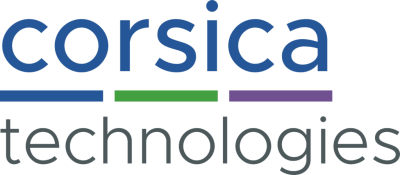I believe that the NHS is rightly recognised as the leading public health system in the world. It’s widely regarded as part of the fabric of the UK and is something I and, I’m sure, the public feel very passionate about.
We’ve all had experiences, either directly or through a loved-one, of being cared for by the NHS and seeing the quality of care at first-hand. The NHS depends on dedicated nurses and doctors. I have family and friends who work on the front line of the NHS, and I know how hard they work.
Providing this level of care and maintaining the vision of the NHS is not easy, but the use of information technology (IT) is helping staff meet these challenges. IT is already playing a pivotal role in initiatives, such as elderly care provision and in the wider vision of a paperless NHS, helping to ensure the ongoing delivery of a world-class healthcare system.
I passionately believe that IT will help the NHS deliver on its vision of providing excellent care, while also operating efficiently. And central to this is the electronic sharing of patient records.
NHS patients are, in effect, consumers and should expect the same level of customer service as they would receive from any other organisation. But many people are surprised when they discover that doctors and other clinicians do not always have access to this kind of shared information.
When patients are referred to a hospital, they want the consultant or surgeon there to know all about them. If they have to go to A&E, they need doctors to be able to see details of previous medical conditions. Customers expect, and should receive, the best level of service, which can help them get back to good health as soon as possible.
The medical history of some 30 million patients is shared securely among GPs, consultants and surgeons using TPP’s SystmOne clinical software
We surely all agree that doctors should be able to see their patients’ medical histories, whatever the context or setting, and many assume this already happens. It’s impossible to imagine a patient would want to have an operation, for example, without the surgeon having access to their full medical records.
Patients should also be able to look at their own medical files, and feel some ownership of their health and treatment. There are some circumstances in which this is particularly helpful, especially with long-term illnesses, such as diabetes, when it’s essential that patients are fully aware of what is happening.
At the same time, however, there are concerns which need to be allayed. Some people may worry that data could end up on the internet by mistake. Others may seek reassurance over data security in general.
Many have been let down by some of the high-profile failings in the financial services sector concerning data leakage. But fundamentally people know their money is secure in banks. The same kind of security exists around electronic medical records, making them far more secure than paper documents.
Medical professionals can give much better levels of care if they have a complete view of their patient’s condition, be it a mental health problem or physical illness. Electronic access to medical records provides a better patient experience and outcome, just through doctors knowing about their patient. This was highlighted in the Caldicott Review which stressed the importance of information-sharing, recommending that doctors should share patient records as a matter of course.
The technology to share electronic patient records already exists. The medical history of some 30 million patients is shared securely among GPs, consultants and surgeons using TPP’s SystmOne clinical software.
This means that when any of these patients enter one of the hospitals using the system, staff will automatically be able see their entire medical record, helping them to make clinical diagnoses and ensure patients receive the right levels of care.
In the event of medical emergencies, this could save lives. Yet there are also 30 million patients who do not benefit from this system.
The government is pushing hard for the adoption of electronic medical records as those hospitals and primary care centres already involved find this system is an effective way of delivering the quality care and service we all associate with the NHS.
However, the NHS needs to be more ambitious with the goals and targets it sets technology providers. It should move away from being overly prescriptive to free up providers to deliver genuine innovation to benefit the healthcare system and its customers alike.
Such an approach would also encourage the use of dynamic, smaller technology providers, helping to find new ways of working which will further improve efficiency in the NHS.
The challenge for the NHS is to continue delivering quality patient care, while raising efficiency and easing the burden on its staff. Technology has a vital role to play and comprehensive electronic medical records, which can be accessed by any relevant medical professionals, should be the starting point.
The NHS must be ready to face the challenges of a modern age – and should embrace IT.
• TPP has been providing electronic health records software for all aspects of health and social care for over 15 years. In the UK, we provide 30 million detailed care records, held on a centralised database, ensuring continuity of care across more than 5,000 NHS organisations. The unique architecture encompasses functionality, which promotes more innovative health delivery, spreading best practice across the entire health system. Generating “big data” through the use of a centralised system transforms patient care and moves the delivery of health towards a prescriptive approach, ensuring that care is always efficient, effective and focused on the patient.
For more information please visit:
www.tpp-uk.com
or e-mail: [email protected]





